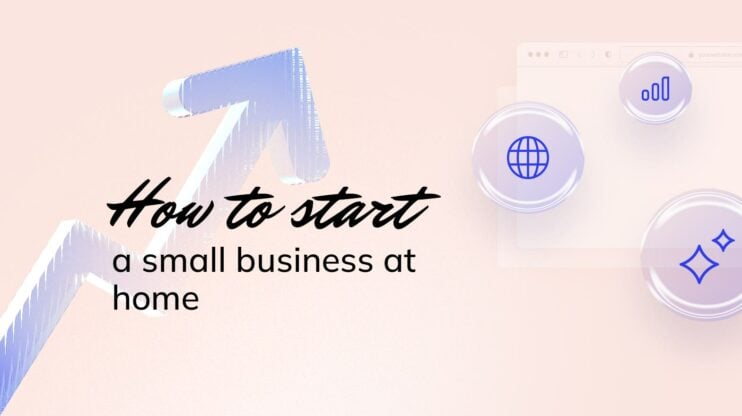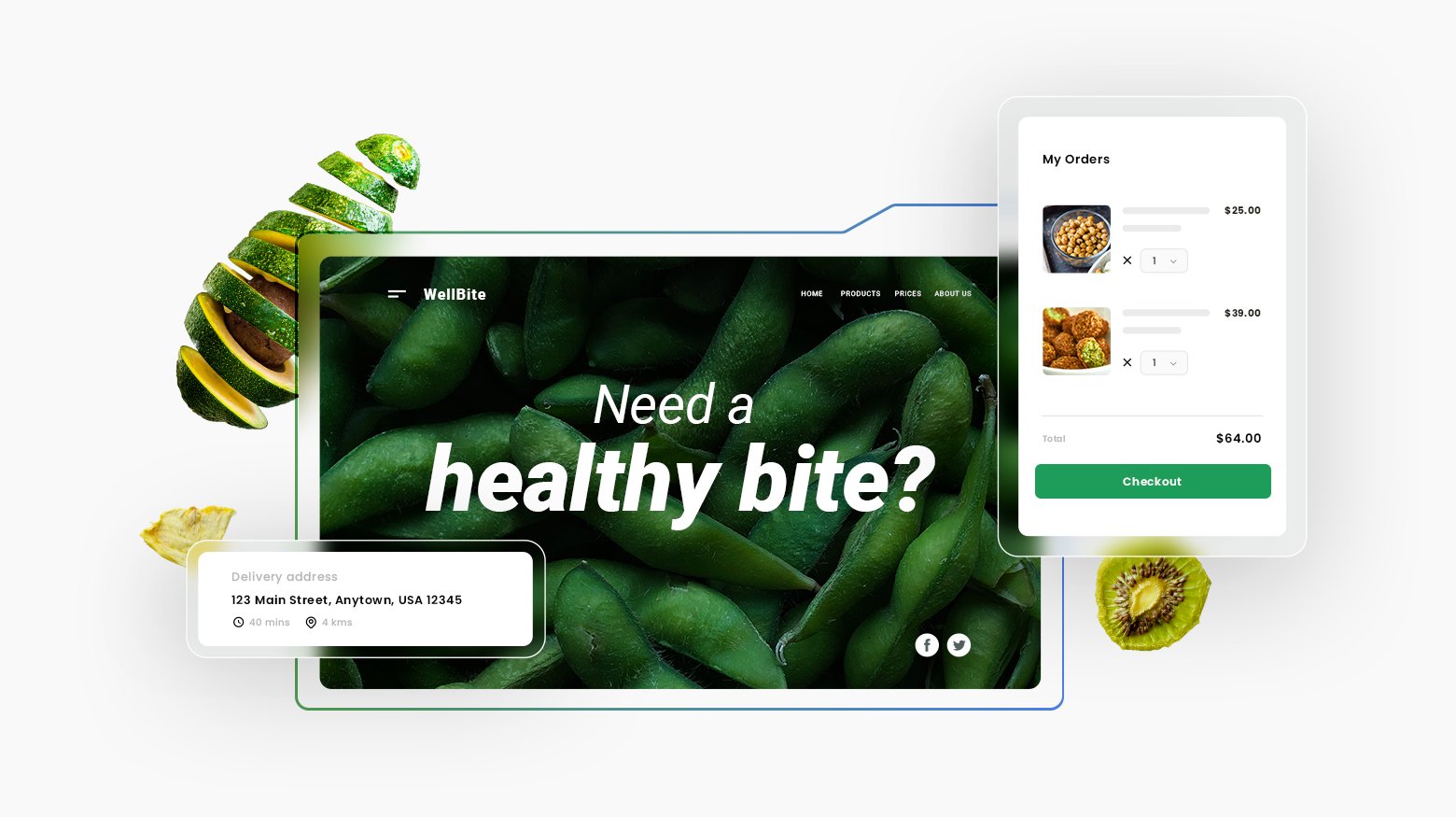A lot of aspiring entrepreneurs hold back, thinking they need hundreds (or thousands) of dollars just to get going. That’s not necessarily true. Plenty of successful online stores started with $0 – just free or cheap tools, creative thinking, and a willingness to start small.
In this guide, we’ll show you how to start an ecommerce business without money – no inventory, no paid ads, and no coding required. Let’s explore free platforms, low-cost business models, and marketing tactics real founders use to land their first sales.
Pre-step: Choose a profitable ecommerce idea (with no upfront costs)
Before getting to the main steps of launching your ecommerce store, it’s important to get clear on what you’ll sell and how you’ll sell it. This is where a lot of beginners get stuck – too many choices and not enough clarity. To make things easier, here are 3 proven ecommerce business ideas which don’t require inventory or upfront investment. Choose the most doable one for you.
1. Dropshipping business ideas (no inventory needed)
With dropshipping, you sell products through your online store, but the supplier handles the inventory and shipping. You can test different products without buying stock upfront. For those wondering how to start an ecommerce business without money, dropshipping is one of the most flexible and low to no cost business ideas you will find out there. Find out how dropshipping works in our blog, but in the meantime, here are some beginner-friendly ideas to keep in mind:
- Niche pet accessories (custom collars, toys, pet grooming kits)
- Eco-friendly products (reusable bags, bamboo toothbrushes)
- Fitness gear (yoga mats, resistance bands)
How to create your product lineup
Start by browsing AliExpress, CJdropshipping, or Spocket – these platforms list thousands of products across niches. Look for products with lots of reviews, high ratings, and reliable shipping times (check the supplier’s stats).
When adding products to your store (your website), customize the descriptions and upload better photos. This builds trust and makes your store unique, even if others are selling the same item.
2. Print-on-demand ideas (create custom products)
Print-on-demand (POD) lets you design products like t-shirts or mugs. The item is printed and shipped when someone buys, so there’s no inventory on your end. You only pay when you make a sale, so it’s perfect for starting with $0. Here are some creative ideas to consider:
- T-shirts with clever quotes in a niche (fitness, pet lovers, teachers)
- Custom mugs or water bottles with original designs
- Phone cases featuring artwork or memes
How to create your product lineup
Use Canva or Kittl to design simple graphics or slogans. Both platforms offer ready-made templates and fonts to help you create something eye-catching. Once your design is ready, upload it to Printify, which you can connect to your own store easily.
3. Digital product ideas (sell once, profit forever)
Digital products are items people download, like ebooks or templates. There’s no physical shipping involved, and after you create the product, every sale is pure profit. You can explore the insider tips of selling digital products here, but before you do that, take a look at some smart ideas in this sphere:
- Ebooks (guides on fitness, budgeting, self-improvement)
- Templates for social media posts or resumes
- Online courses or workshops (teach a skill you know)
How to create your product lineup
One simple product, like a checklist, template, or mini-guide, can be your starter. Use Canva for anything visual (ebooks, templates), or Google Docs/Notion for written content. If creating courses, try Loom for quick screen recordings.
4. Affiliate marketing ideas (promote and earn)
Affiliate marketing isn’t technically ecommerce. You’re not selling your own products or managing a store. Instead, you promote other people’s products and earn a commission when someone buys through your link.
But it’s still worth mentioning. If you’re not ready to create your own products yet, affiliate marketing can be a low-risk way to start making money online. It’s a good stepping stone if you want to get into marketing, build an audience, or test your niche, before jumping into full ecommerce.
What to choose?
You might be feeling overwhelmed with all the options, it’s okay. Take a step back. Start with an idea that matches your strengths or interests. Take this table as a guide to help you with the choice, but keep in mind – you can always start, test, and switch:
| If you… | Best model | Why it’s a good fit |
| Love designing or creating visuals | Print-on-demand, Digital products (templates, printables) | Turn your creativity into sellable products without holding inventory. |
| Enjoy writing, teaching, or reviewing | Digital products (ebooks, courses), Affiliate marketing (content-focused) | Monetize your knowledge through products—or start with recommendations. |
| Prefer selling physical products (hands-off) | Dropshipping, Print-on-demand | Sell items online without managing stock—suppliers handle fulfillment. |
| Have a specific skill or service to offer | Digital products, Affiliate marketing (as a stepping stone) | Package your expertise into products—or promote tools you trust. |
Next steps: How to start an ecommerce business without money
Let’s do a quick reality check before you start. Most guides won’t tell you that you don’t need to have everything figured out before you start. Your product lineup doesn’t need to be set in stone. And you don’t have to deal with paperwork before you’ve even made a sale.
This is your test drive. You’re here to experiment with your idea, see if people are interested, and adapt as you go. That’s the beauty of ecommerce today – it’s flexible. Here’s your step-by-step roadmap for how to start an ecommerce business without money – from finding your audience to getting them to buy from you.
1. Find your target audience
Before anything else, you need to know who you’re selling to and what they care about. What you sell doesn’t necessarily have to be the trendiest product, but it should have a market that’s profitable, growing, and aligned with your interests. Here’s how to do it:
- Explore niches you’re curious about: Use tools like Google Trends, Amazon Best Sellers, or forums to see what’s trending.
- Find the sweet spot: Have a list of things that excite you somewhere in your Notes app, and compare them with a list of things people are willing to pay for. The intersection is what you should go for.
- Understand your audience’s pain points: Who are they? What problems do they face? How can your product help?
It’s really important not to aim for everyone. Focus on a small, specific group. It’s easier to stand out when you’re speaking directly to the right people.
2. Create your brand (name, logo, and story)
Even when you’re starting with $0, a strong brand makes your store legit. It’s what helps people trust you enough to buy, and it makes you feel proud of what you’re building. Plus, creating a brand that looks great and feels unique is totally something you can DIY and still look professional. Let’s break it down.
2.1. Start with a name
Grab a notebook (or your phone/laptop) and brainstorm some ideas. Don’t overthink. Just write down words or concepts that feel connected to your product, niche, or vibe. If you’re stuck or want to expand the options, use free tools like the 10Web’s Business Name Generator to help spark ideas – it’s like a free brainstorming buddy. Just type in a few keywords and get a list of creative names.
2.2 Build your brand identity (logo + more)
A great logo helps sell products, even if people don’t know you yet. But if you’re not a designer, where do you even start? There are tons of free tools out there, and you can get confused with a lot of options. It’s optimal to find an option that doesn’t just give a logo, but the most value for your time.
10Web’s AI Logo Maker is completely free and does exactly that. It gives you a complete logo with colors, fonts and icons, and full brand kit (for a small fee) – mission, vision, social kit, domain, website setup – everything you need to look good across your website and social media. And it works as just fast and easy:
- Describe your business: Tell the AI what you sell (or give your business name) and choose your style (modern, playful, minimal, etc.).
- Get instant logo options: The AI suggests designs tailored to your brand.
- Customize & download your brand kit: Edit colors, fonts, icons, and layouts until it feels right, then grab your high-res logo files, color codes, and matching templates.
If you want your brand to stand out, keep your logo simple and clear. Choose colors and logo fonts that match your vibe.
2.3 Bring it together with a short brand story
This doesn’t have to be long, just one or two sentences that share why you started or what makes your business different. It helps people connect with you. It can be as simple as “I started this store to create fun, eco-friendly pet accessories that both pets and owners love.”
Now you’ve got a name, a logo, a brand kit, and a story, everything you need to start sharing your store with the world.
Do you need to register your business at this point?
3. Build your store with 10Web (no tech skills needed)
Building a website is associated with developers, agencies, and high-cost subscriptions, and that’s what scares most of the beginners. But it’s 2025. You can build a fully functional online store without touching a single line of code all on your own. You just need the right tools for it, and that’s 10Web’s AI Ecommerce Website Builder.
It handles everything for you – hosting, domain, design, secure payments, mobile optimization, and more. You just follow this 3-step process, and get your site in minutes:
- Describe your business: What are you selling and who’s it for?
- Let AI do its part: Instantly get a full WordPress site with WooCommerce integration, product pages, and design.
- Customize & launch: Change colors, fonts, and more, then hit publish.
After it’s done, you can make changes if needed, again with AI. You just type in the desired changes in your chat with AI, and the AI Co-Pilot does it for you. If you’re into traditional drag-and-drop editing, that’s also possible. Anything to make your journey easier.
As a bonus to everything else mentioned above, you get great tools that are life-savers for 1st time-founders:
- A free domain for the first year: So your store has a professional web address (no weird subdomains).
- Safe payment systems built-in: Accept PayPal, Stripe, and credit cards right away without tricky setups.
- Easy store management with one clean dashboard:
- See your sales, orders, and products at a glance
- Manage products, customers, and orders without clicking through endless tabs
- Set up payments, taxes, and shipping in just a few clicks
- Monitor transactions, payouts, and emails all in one place
If you’re serious about growing your store and building a brand, 10Web gives you full control with zero overwhelm.
4. Prepare to launch
With your store set up and ready to go, the next step is getting people to see it. But before you even do it, ensure that everything works: payments, shipping, mobile version, and others. You don’t want the potential buyer running into a problem. Everything can be checked by a simple test-order.
Create your dream website with 10Web AI Website Builder 
Build your website in 1 minute
and take your business online!
Get your first customers without spending on ads
Getting your first sale without spending on ads is one of the biggest challenges when figuring out how to start an ecommerce business without money. All you need is a clear, simple strategy that matches where your audience hangs out. That’s why we initially focus on understanding your audience. Here’s how to move forward, even if you’re feeling lost in the options.
1. Start where your customers already are (social-first selling)
Social media platforms like TikTok, Instagram, and Facebook groups are great discovery tools. For your specific target it might be Discord, X, or specific online forums, so do it based on your own market research results. You can start conversations, share your process, and get people excited about your products on those platforms:
- Join niche Facebook groups: Engage in communities related to your product (pet owners, eco-friendly living). Share helpful content, and when people show interest, guide them back to your store for more info or checkout.
- Post TikToks or Reels: If your audience is on these platforms, show your product in action, tell your story, or share tips related to your niche. Use trending sounds and hashtags to reach new audiences.
2. Build trust from day one
One common fear first time founders have is looking scammy, especially with dropshipping or pre-orders. Here’s how to build trust from day one:
- Be transparent: Clearly state shipping times and details (especially if you’re dropshipping).
- Show behind-the-scenes content: Share your process, product sourcing, or packaging (if applicable). This humanizes your store.
- Encourage early feedback: Offer discounts or bonuses to your first buyers in exchange for honest reviews.
Many fear that without inventory or a physical product, they can’t build trust. But transparency and social proof (even just showing engagement) go a long way.
3. Collect emails early
Even if you’re just starting, you can build an email list of people interested in your products. Algorithms can change, but your email list is yours. You can do it on social media by encouraging early sign-up for discounts, free guides, or early access to a new product. Your store itself can have a sign-up form.
But don’t forget to make it useful for the person signing up. If you become too “annoying” with constant useless emails they might just unsubscribe. Try to use the email to build a community instead of being too “salesy.”
4. SEO: Future growth strategy
Search engine optimization (SEO) won’t bring you traffic on day one. Search engines like Google take time to notice new stores, and ranking on the first page usually requires building authority and trust, which doesn’t happen overnight.
However, starting your SEO early is like planting seeds. It might not pay off immediately, but in a few months, you’ll start seeing organic traffic trickle in, and that traffic keeps growing without you having to pay for ads.
So while you focus on social media and direct outreach for your first customers, start laying the SEO groundwork, especially with local SEO. You should also take a look at the essential ecommerce SEO strategies in our blog to take key points and apply them to make their seo strategy more complex and better.
Platform hacks (forum favorites)
- Use Facebook Marketplace or Instagram DM sales.
- Try PayPal buttons for easy checkout if you’re selling a small number of products.
- Use Google Forms as an order form – simple, free, and works for early sales.
How to fund your business (when you need just a little extra)
One of the biggest questions around how to start an ecommerce business without money is whether you’ll ever need some funds. You can absolutely get started with no inventory and no upfront product costs using models like dropshipping, print-on-demand, or digital products. But sometimes having just a little cash on hand helps. Maybe you want to invest in custom designs or cover small tools or invest in a better website setup. It’s always good to give yourself just enough breathing room.
1. Pre-orders
If you’re launching custom products (like a limited-edition t-shirt or handmade item), pre-orders let you sell first and produce later. Set clear delivery expectations on your website. Use urgency (like limited quantities or early-bird pricing) to encourage buyers. Many ecommerce founders on Reddit use pre-orders as their first funding source—no upfront investment needed.
2. Crowdfunding
If you have a unique product idea or want to launch something beyond dropshipping or POD, crowdfunding through platforms like Kickstarter or Indiegogo could help. Focus on telling your story well – why your product matters, what problem it solves. Offer rewards or early access to backers. But note that crowdfunding takes effort (video, marketing), so use it when you’re ready to scale, not for every product.
3. Grants
Some local governments, non-profits, or organizations offer grants for small businesses, especially if you’re solving a problem, focusing on sustainability, or part of an underrepresented community. These grants don’t need to be repaid. You can check 60+ grants for small businesses in our blog, if you’re considering this option. But don’t rely on this for your first sales. Keep it on your radar as your business grows.
Can you really start an ecommerce business without money?
You’ve probably seen advice online that feels too good to be true, or, on the flip side, warnings that make starting a business feel impossible without a big budget. Here’s the truth behind the most common myths people have when exploring how to start an ecommerce business without money.
Myth 1: You need a big budget to start.
With models like dropshipping, print-on-demand, and digital products, you can skip the inventory costs and upfront product investment. There may still be small, optional costs. For example, setting up your website or design tools for creating products.
Reality: You don’t need a big budget, but a little resourcefulness and the right tools.
Myth 2: Dropshipping is a scam.
This one comes up a lot, especially on Reddit and forums. And yes, bad dropshippers who hide long shipping times or cut corners give the model a bad name.
Reality: Dropshipping isn’t a scam, it’s a business model. But ethical dropshipping means being upfront about shipping times, choosing reliable suppliers, and offering good customer service.
Myth 3: Only viral stores succeed.
It’s easy to believe that going viral is the only way to make sales. Scroll through TikTok or Instagram, and it seems like everyone’s success story starts with a viral post.
Reality: But most stores grow quietly at first. Success usually comes from consistent, small actions, like showing up in Facebook groups, posting regularly on social media, or slowly building an email list.
The best thing you can do is take the first step, then the next one.
Yes, you can start without money – here’s what to remember
You don’t need a big budget to launch an ecommerce business. With models like dropshipping, print-on-demand, and digital products, you can start lean, test your idea, and build as you go. Here’s a quick summary of what we discussed:
- Pick a model that fits your strengths, no need to overthink it.
- Create simple products or content using free tools.
- Build your store with 10Web to keep things fast, secure, and beginner-friendly.
- Get your first customers with organic strategies – social media, email, SEO groundwork.
- Ignore the myths, you don’t need to go viral or spend thousands to succeed.
One final tip: You’re not behind. You don’t need to have it all figured out. The key is to start with what you have, improve over time, and adjust as you grow.
When you’re ready to bring your idea to life, AI Ecommerce Website Builder and Brand Kit tools will support you from your brand to a full-functioning website.
Create your dream website with 10Web AI Website Builder 
Build your website in 1 minute
and take your business online!
FAQ
How do I start an ecommerce business for free? Which ecommerce model is most profitable? Do I need an LLC to start an ecommerce business? What’s the difference between dropshipping and pre-orders? How do I build trust if I don’t have inventory or reviews? What free or cheap platforms can I use to start? Can I use Facebook Marketplace or Instagram to sell? Do I need a website, or can I just use social media? How do I get traffic without spending money? Is affiliate marketing worth it in 2025? What are realistic income expectations?
Create your dream website with 10Web AI Website Builder 
Build your website in 1 minute
and take your business online!












